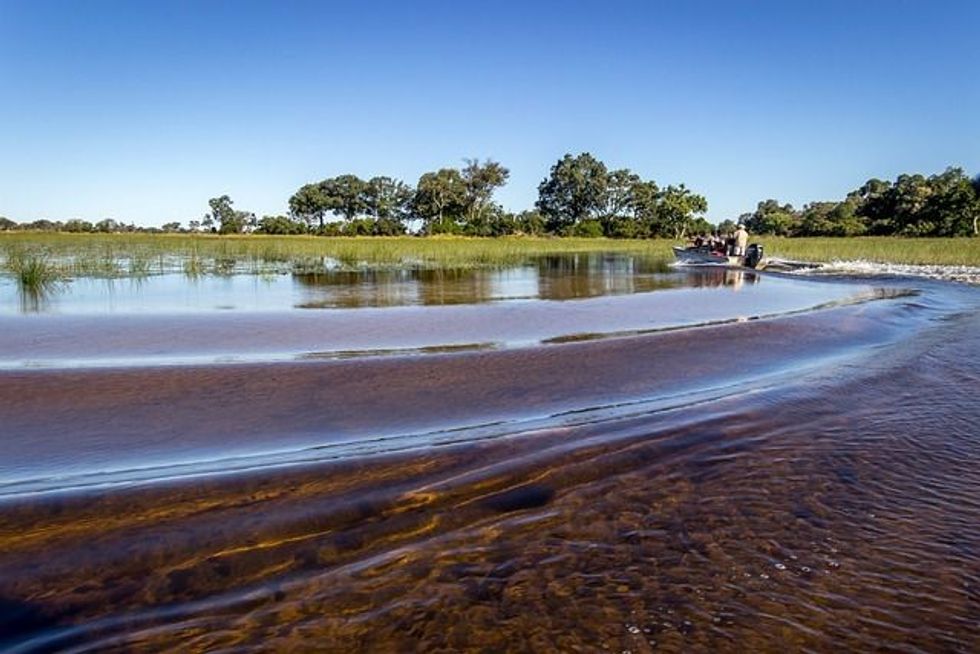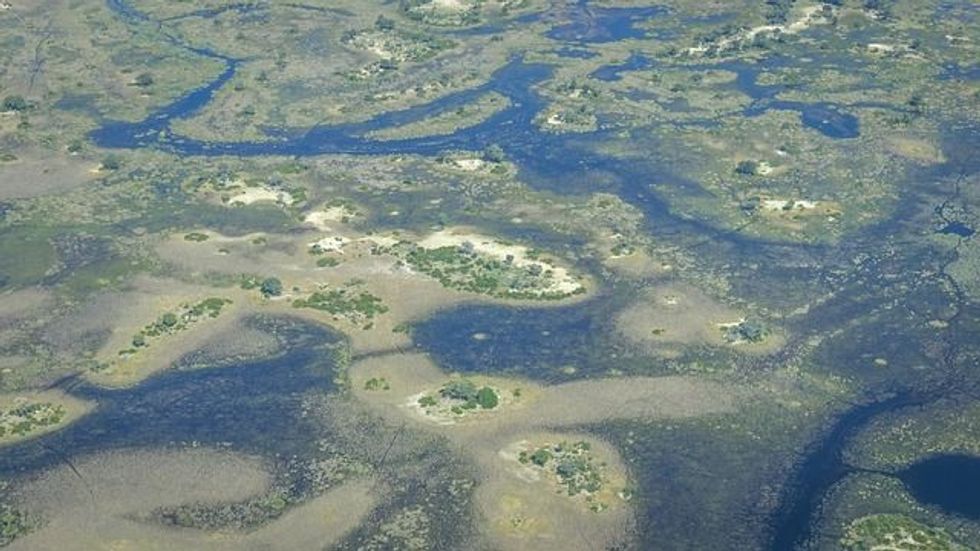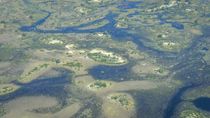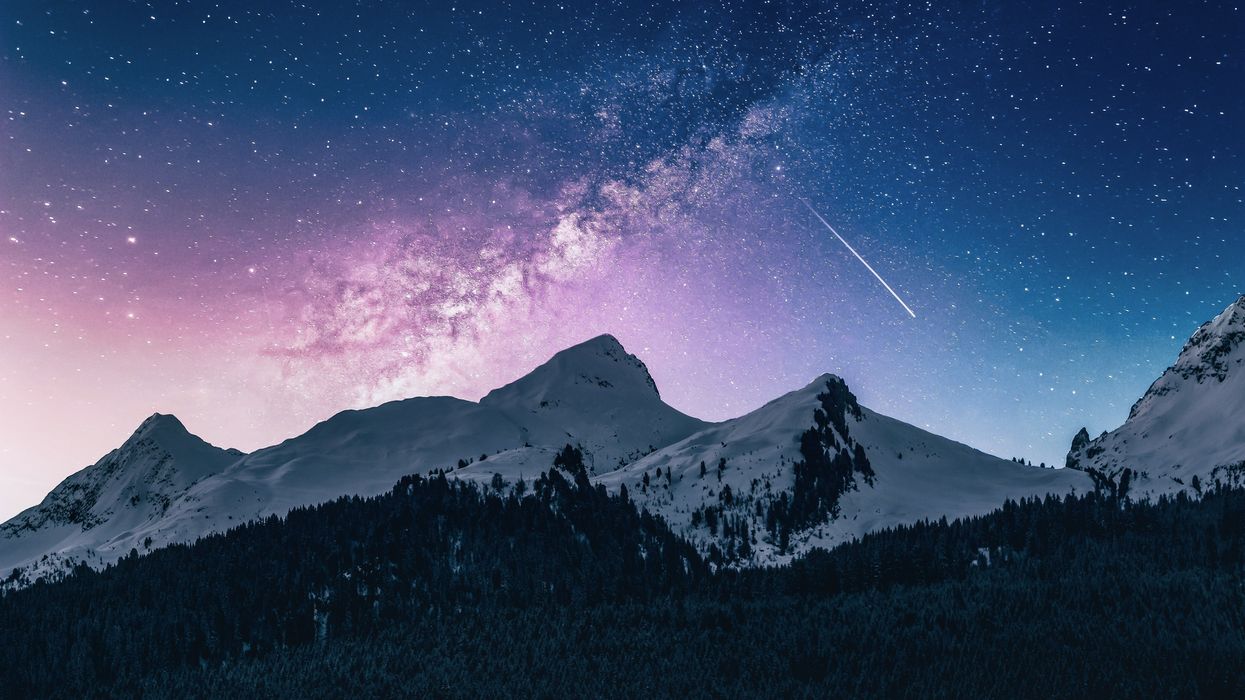Botswana's Okavango Delta: One Of The Largest Inland Deltas
Okavango Delta is the third-largest alluvial plain and the largest endorheic delta in Africa.
One of the interesting facts about the Okavango Delta is that it is one of the largest inland deltas, which means it does not open to the sea. It is an endorheic delta because the water drains into the Kalahari desert basin.
Though most rivers drain into the sea, the Okavango River drains into open sandy land, and floods the savanna region, thus creating a peculiar and ever-changing inland delta. Okavango Delta is one of the unique national parks in Africa.
As a famous world heritage conservation region, Okavango Delta is an exceptional example of inter-dependence, intricacy, and climate change. It is also an example of hydrological, geomorphological, and biological processes.
The continuous change in the geomorphic features of the islands, its channels, lagoons, flood plains, and oxbow lakes, is an amazing scientific sight to behold. The Okavango river banks play a major role in the biotic and abiotic environment of the delta, including the habitat of the woodlands and dry grasslands.
The Okavango Delta is responsible for several ecological factors like channelization, flood inundation, nutrient cycle, and biological factors like migration, breeding, growth, plant succession, and colonization. These ecological processes in the Okavango Delta can understand the long-term existence of such wetlands.
The United Nations (U.N.) has been working on sustainable development on this world conservation site. The Okavango safari is one of the best safari experiences in the world.
Area Of Okavango Delta
Okavango Delta is located northwest of Botswana, and it comprises seasonally flooded plains and permanent marshy land. It is the largest global delta with an entire wetland system, whose river system does not drain into the ocean.
One of the main characteristics of the Okavanga national parks is that the annual flooding there occurs in the dry season. According to the prevalent biological cycle, seasonal rainfall, and floods, the local plants and animals have adapted themselves to it.
Okavango Delta shows the perfect example of interaction between the climate, hydrological cycle, and ecological processes. Okavango Delta is home to the largest endangered species such as Nile crocodile, lion, cheetah, wild dogs, black rhinoceros, and white rhinoceros.
The Okavanga River is the fourth-longest river in Africa and is around 994.1939 mi (1,600 km) long. It drains onto the sandy surface of the Kalahari Desert and creates the largest delta in the world because its channels do not drain into the sea.
The Okavanga Delta covers a distance of 994.1939 mi (1600 sq. km). It is also a part of the Kalahari Desert and Moremi Wildlife Reserve. The shallow water region is around 65 ft (20 m) in depth.
Okavango Delta is one of the most unique national parks, attracting tourists around the globe. It is a major water source for Botswana. It provides food and building materials for natives.
Although around 500,000 solid salts reach the water of the Okavango River, it remains fresh. The transpiration that occurs in the plants prevents evaporation at the surface, and the salts accumulate around the area. The seasonal floods help nourish the area.
Climate In Okavango Delta
The activity of the Okavanga Delta, as mentioned above, is uncommon. It is not possible to find such a big delta in the middle of a sandy desert. The Okavango Delta was formed by a massive earthquake around 50,000 years ago in southern Africa.
Due to the earthquake, eleven trillion liters of water were spilled into the desert. The area flourished, and animals settled there. It then became one of the best national parks for extraordinary wildlife safari experiences.
The climate in Okavango Delta is warm and hot, and it experiences two main seasons: wet and dry seasons. The wet season starts from November to December. It comes as a relief to the area, and the last rainfall of the wet season ends in April.
With the arrival of the wet season, the dust settles, and everything cools down. During the wet season, afternoon thunderstorms and little rainfall are common. However, the afternoon is very hot, and the temperatures can be as high as 88 F (31 C). Morning time is the best time to be active and enjoy a safari ride.
The November and December months of the season are hot and sunny, and it rains frequently. The temperature is around 65 F (19 C). The rain comes as a relief during these months, and the morning hours are the most comfortable.
The January and February months of the wet season receive the most rainfall. Powerful thunderstorms are very common during this time.
Rainfall is common during the afternoon and usually stops after a few hours. Rainfall density lessens by the end of March, although there may be a couple of days with a slight shower accompanied by a storm. The morning temperatures are around 64 F (18 C).
The dry season starts in April and May. The vegetation in the delta during these months is green. There is plenty of sunshine, and the days are warm and dry. The temperature is around 84 F (29 C).
The coolest month of the dry season is June, July, and August. If you are here for the Okavango safari, remember to wear warm clothes if you have opted for early morning game drives and boat rides.
The temperature during the morning hours is around 45 F (7 C), and the afternoon temperature is around 79 F (26 C). On average, the weather is pleasant.
September and October are regarded as the end of the dry season, and it gets hotter before the arrival of the monsoon. The temperature in October is around 95 F (35 C) and the weather is pleasant only during the morning and night.
The Okavango Delta is one of Africa's most vibrant safari spots, making it even more alluring. While you will find the area different depending on the rains received every year, the Okavango Delta has a distinct cyclical rhythm that you can study to figure out the best time to visit!
Based on careful planning and a deeper understanding of its complex environment, you can enjoy an excellent safari at any time of year. Every season and year is different, and this can make deciding when to visit the Okavango Delta quite challenging.
The Okavango conservation site is one of Africa's most exotic safari spots, making it very appealing. In contrast, it will consistently be different, relying upon the downpours.
In certain regions, the Okavango Delta has an unmistakable repetitive cadence which can be contemplated to conclude when is the best chance to visit the Okavango Delta. Each season is unique, and without a doubt, every year is different as well.
Tourists can make choices about when to visit the Okavango Delta, which may or may not be enjoyable. With cautious arranging due to its unpredictable intricate climate, however, you can partake in a great safari at any season.
Flora And Fauna
The Okavango Delta was announced as the one thousandth UNESCO World Heritage conservation site on June 22, 2014. This choice depended on how the delta, one of the biggest inland deltas on the planet, is one of only a handful of exceptional major delta systems that doesn't stream into the sea or an ocean.
Other Okavango Delta characteristics that impacted this choice are that the Okavango River floods during the dry season.
The delta is home to endangered wildlife such as black and white rhinos, wild dogs, lions, and cheetahs. It is also a fishing ground for a variety of fish species.
As a world heritage conservation site, the Okavango Delta supports vigorous populaces of a portion of the world's most endangered wildlife, such as cheetah, white and black rhinoceros, wild dogs, and lions. All these endangered species adjusted to living in this wetland system.
The delta's territories are species-rich with 1061 plants (with 134 families and 530 genera), 482 bird species, 130 species of vertebrates, 89 fish, and 64 reptiles.
The natural territories of the designated region are assorted and incorporated seasonal climates. It has permanent rivers and lagoons, marshes, that floods.
It also has seasonal grasslands, riparian timberland, dry deciduous forests, and island networks. Each environment has a particular animal type, including one of the significant classes of aquatic organisms, reptiles, birds, and mammals, making it one of the best spots for a safari experience.
The Okavango Delta is wildlife-rich. It is also an important bird region, holding onto 24 species of threatened birds worldwide, including six species of the southern ground hornbill, vulture, slaty egret, and wattled crane.
Thirty-three species of water birds are in the Okavango Delta in numbers that surpass 0.5% of their worldwide or regional populace. Botswana wildlife upholds the world's biggest populace of elephants, numbering around 130,000: the Okavango Delta is the central region for this species' endurance.

Floods
The Okavango Delta is one of a kind in various ways for the best safari experience. Though it is the world's biggest inland delta, the Okavango exists in a desert!
You'll track down the streaming waters, wildlife, and lavish plant life of the Okavango Delta in the Kalahari Desert because of a topographical occasion that occurred over 50,000 years prior.
The Okavango Delta is a huge inland waterway delta impacted by seasonal floods. Water goes north 621.371 miles (1,000 km) from the downpour doused high countries of Angola before it goes to the Kalahari sands and gradually leaks away.
When floods show up, the primary channels of the delta get rich meadows, reed beds, mopane timberland, and palm forests. A green oasis is made during this time-a sanctuary for wildlife.
The downpour in Angola happens for the most part from November through April, before leisurely clearing its path into Namibia, and then into Botswana, normally by May. The floods ordinarily top in the delta during July through August and subside in September.
The season when the floodwaters are at their peak in the delta is called the dry season as there is no downpour. November through February are the most sweltering months, and the ground is very dry, but since this is the point at which the most rainfalls, it is called the wet season.
In the months of the flood, a migratory herd of elephants heads for the delta. In these months, the region showcases the continent's elephant populace. Rhinos are, in any event, making a rebound as progressives, unfortunate of their endurance in South Africa, migrate to Botswana's Okavango Delta.
When the delta is flooded, there is a lot of water available for all species of the creature, and it implies that the crowds can fan out.
The more sweltering summer months of November through February are additionally extraordinary for a game survey. Since there is restricted water, the wildlife safari site encompasses the leftover waterholes, making them a lot more easy to find.
FAQs
Q: What is special about Okavango Delta?
A: The Okavango Delta in Botswana is one of the world's biggest inland deltas. While most river deltas typically lead to a sea, the Okavango River purges onto open land, flooding the savanna and making a novel and steadily evolving inland delta. The delta changes multiple times in size between March and August.
Q: What is the best time to visit the Okavango Delta?
A: The best time to visit the Delta is during the dry season from June to October, when the downpours have halted, and the floodwaters have elevated. Even though called the dry season, the Okavango waters are most elevated as the floodwaters show up from Angola, with the creatures rushing to the waters from the dry hinterland.
It is additionally when many camps can offer water activities. Anyway, there are special cases.
October, for instance, is the driest and most sweltering month and conveys brilliant game viewing; however, as a rule, it has low water levels. It is vital to note that the best time to visit the Okavango Delta will be contingent upon your specific advantages.
Q: Why is the Okavango Delta a top tourist attraction?
A: It is considered the most desired tourist spot on the planet, as Okavango Delta gives access to the exhibition of wild Africa, the heart-halting energy of a huge game viewing, the incomparable quietness, and serenity of a new delta, and the reminiscent scenes of natural habitat.
Q: What is the major problem in the Okavango Delta?
A: These progressions prompt natural resource depletion, biodiversity misfortune, water pollution, and different types of land corruption. Water is the important driver of the Okavango ecosystem, and the seasonal rainfall in the Angola good countries oversees the degree of the seasonal flooding in the Okavango delta.
Q: What animals live in Okavango Delta?
A: The delta's natural ecosystem comprises rich species of 1061 plants belonging to 530 genera and 134 families, 482 species of birds, 130 species of mammals, 89 fish, and 64 reptiles. You can expect to see hippo, giraffe, elephant, buffalo, bushbuck, reedbuck, lechwe, sitatunga, zebra, crocodile, wildebeest, tsessebe, and impala.
Predators, including lions, leopards, cheetahs, hyenas, and wild dogs, have also adapted to life in the delta.
We Want Your Photos!
More for You
Bachelor of Science specializing in Botany, Master of Science specializing in Clinical Research and Regulatory Affairs

Sridevi ToletyBachelor of Science specializing in Botany, Master of Science specializing in Clinical Research and Regulatory Affairs
With a Master's degree in clinical research from Manipal University and a PG Diploma in journalism from Bharatiya Vidya Bhavan, Sridevi has cultivated her passion for writing across various domains. She has authored a wide range of articles, blogs, travelogues, creative content, and short stories that have been published in leading magazines, newspapers, and websites. Sridevi is fluent in four languages and enjoys spending her spare time with loved ones. Her hobbies include reading, traveling, cooking, painting, and listening to music.
Disclaimer
1) Kidadl is independent and to make our service free to you the reader we are supported by advertising. We hope you love our recommendations for products and services! What we suggest is selected independently by the Kidadl team. If you purchase using the Buy Now button we may earn a small commission. This does not influence our choices. Prices are correct and items are available at the time the article was published but we cannot guarantee that on the time of reading. Please note that Kidadl is a participant in the Amazon Services LLC Associates Program, an affiliate advertising program designed to provide a means for sites to earn advertising fees by advertising and linking to Amazon. We also link to other websites, but are not responsible for their content.
2) At Kidadl, we strive to recommend the very best activities and events. We will always aim to give you accurate information at the date of publication - however, information does change, so it’s important you do your own research, double-check and make the decision that is right for your family. We recognise that not all activities and ideas are appropriate for all children and families or in all circumstances. Our recommended activities are based on age but these are a guide. We recommend that these ideas are used as inspiration, that ideas are undertaken with appropriate adult supervision, and that each adult uses their own discretion and knowledge of their children to consider the safety and suitability. Kidadl cannot accept liability for the execution of these ideas, and parental supervision is advised at all times, as safety is paramount. Anyone using the information provided by Kidadl does so at their own risk and we can not accept liability if things go wrong.
3) Because we are an educational resource, we have quotes and facts about a range of historical and modern figures. We do not endorse the actions of or rhetoric of all the people included in these collections, but we think they are important for growing minds to learn about under the guidance of parents or guardians.







